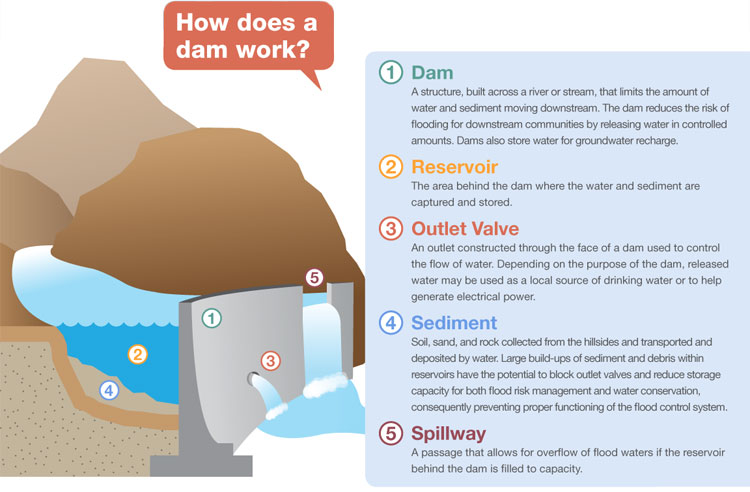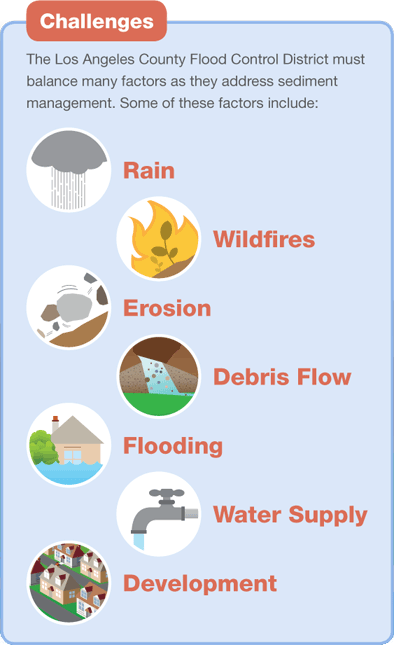How Dams Help Los Angeles
Addressing Sediment Management
The Flood Control District built a system of dams and debris basins, which interrupted the natural sediment process. This allowed Los Angeles to develop neighborhoods within floodplains while reducing flood risk for residents. Although erosion still occurs during rainstorms, unpredictable rivers and sediment are now diverted into protective channels. Water, sediment, and debris are captured by the flood control system rather than spreading into and damaging Los Angeles’ extensive network of neighborhoods. Despite these measures, the District continues to face numerous challenges in providing flood risk management and water conservation.
Flood Risk Reduction
The Flood Control District is charged with maintaining flood risk management by keeping dams and debris basins operational. The District’s vast network of flood control facilities helps reduce the risk of flooding where it has a natural tendency to occur and has contributed to the growth of Los Angeles into the region it is today.

Water Conservation
Reservoirs play a vital role in replenishing our region’s groundwater basins, helping Los Angeles maintain a reliable and sustainable supply of drinking water. As needed, water is released from reservoirs into a system of open channels that direct it to spreading grounds, where it slowly percolates—or infiltrates—into the soil to replenish groundwater basins. Water within these basins are accessed by wells, providing a valuable local source of drinking water. By conserving water in reservoirs, Los Angeles County reduces its dependence on imported supplies from other regions. The flood control system aims to capture as much water as possible within reservoirs and diverting it to spreading grounds, rather than being lost to the ocean. Today, local groundwater basins meet the supply needs of roughly one-third of Los Angeles County households.

